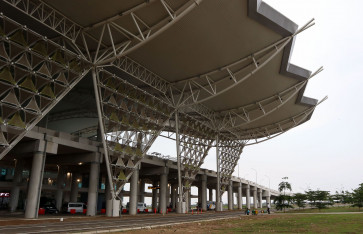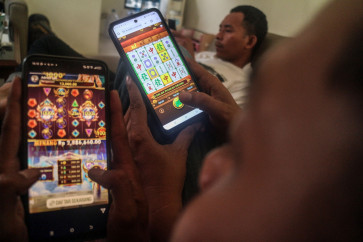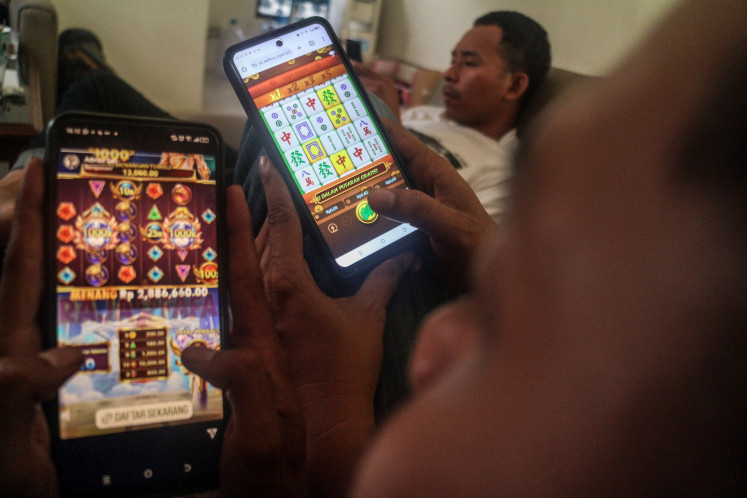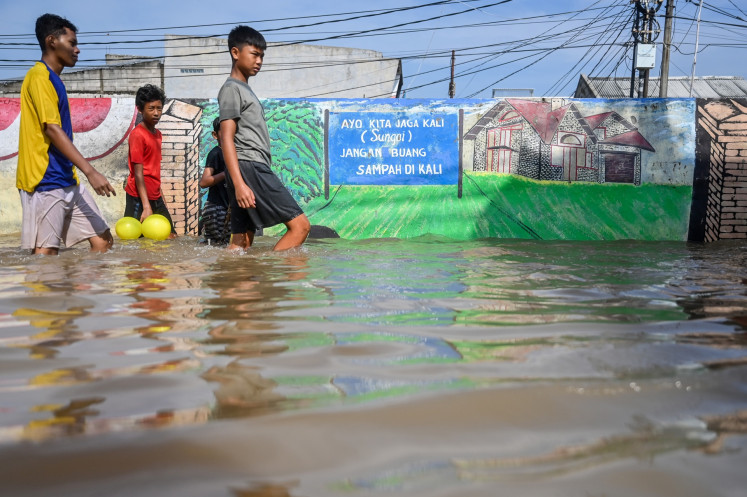Popular Reads
Top Results
Can't find what you're looking for?
View all search resultsPopular Reads
Top Results
Can't find what you're looking for?
View all search resultsOn the shelves: 'I Am Malala': Her first-hand story
The world was shocked by an ambush on a school bus on the fateful day on Oct
Change text size
Gift Premium Articles
to Anyone
The world was shocked by an ambush on a school bus on the fateful day on Oct. 9, 2012 by the Taliban in Swat Valley, Pakistan ' a place where an armed conflict between the Pakistan army and the Taliban has been raging since 2007.
The ambush targeted a 15-year-old girl, Malala Yousafzai, but other bullets also hit two girls sitting next to her on the bus. Luckily, they survived.
Who is Malala? Why did the Taliban attack her? Malala tells her story in the book, I Am Malala, which she wrote with British journalist Christina Lamb. Aside from her personal story, the book also describes the social, cultural, and political background that have shaped the conditions leading to the attack.
Born in 1997 in the Swat Valley area, Malala grew up in a family from the Pashtun tribe that came from a territory located in what is now Afghanistan. Swat itself was a princely state where the wali, or ruler, had power over the land. Swat joined with Pakistan after the partition from India in 1947, but it remained autonomous except in the field of foreign policy. The wali gave his power over to the Pakistan government in 1969.
After the Soviet Union invaded Afghanistan in 1979, then-Pakistani president Gen. Zia ul-Haq, with the assistance of the US and other Western countries, recruited Afghan refugees in Pakistan to become mujahideen or resistance fighters to fight against the Soviet forces.
A number of Muslims from all over the world also supported the mujahideen by pouring money into their cause and becoming volunteer fighters. In Pakistan also, many young men were recruited to fight in Afghanistan. Apart from being recruited, these young men also studied religion, earning themselves the label, talib, meaning religious student.
Malala's father, Ziauddin Yousafzai, was running a school in Swat where Malala studied. Her book tells of Ziauddin's efforts to establish the school from scratch, as well as his belief in the importance of equal access for both boys and girls to education. Indeed, he faced many challenges from several groups that perceived girls being educated as haram (forbidden), according to their interpretation of Islam. He even received threats of his school being shut down. According to Malala, her father's efforts amounted to the most significant factor that helped shape her personality and ideas, as well as the belief that girls were entitled to receive an education.
In other parts of the book, Malala talks of her teenage world: her school life, beliefs and passion. This section of the book describes how she loves Bollywood movies, picnics and, like many other teenage girls, spending a lot of time in the bathroom in front of the mirror trying out looks she had seen in movies.
She shone at writing and delivering presentations; two fields that she says gained her a position on her school's honors board for coming first in her class.
As a Muslim, she believes that: 'Islam has given us this right, and says that every girl and boy should go to school'. This belief made her very persistent about girls' education, despite the growing repression under the Taliban.
As the book describes, the Taliban's influence grew stronger in the Swat Valley as a result of people's frustration over Pakistan's justicial system and corrupt government officials.
With the idea of establishing Islamic law, the Taliban created the hope among many people that they would restore the old Swat system from the time of the wali. The Taliban then banned activities categorized as haram based on their interpretation of Islam, such as women going to school, work, or conducting any outside the home except in emergencies. Day by day, the Taliban gained greater control over the area and took the law into their own hands. In January 2009, for example, they executed a female dancer for what they perceived to be her 'immoral character'.
Under these conditions and using the pseudonym Gul Makai ' the name of a heroine in a Pashtun folk story ' Malala wrote a diary about one schoolgirl's life under the Taliban. Extracts from the diary appeared on the BBC Urdu website in 2009. Subsequently, Malala attended several interviews, including one by The New York Times online and Geo TV. These activities brought her to prominence and, hence, the target of the Taliban ambush.
History records that Malala's survived the attempt to silence her and she has now become a global icon of girls' education. She has addressed the United Nations in New York and met with UN Secretary-General Ban Ki-moon. She was also nominated for the Nobel Peace Prize.
Today, Malala along with her parents and two brothers, live in Birmingham, the UK, a place that is very different to her birthplace in Swat Valley. Although she acknowledges that she is happy with the current life, she says, 'Over the last year, I've seen many other places, but my valley remains to me the most beautiful place in the world'. She ends the book with the words, 'I am Malala. My world has changed but I have not'.
Written in the first person, the book offers a more intimate and personal account about Malala's personality, experiences and vision about the future.
However, the book also includes a great deal of information on the historical, social and political background, such as Pashtun history, the birth of Pakistan, the rise of Zia ul-Haq, the Pervez Musharraf regime, the assassination of Benazir Bhutto and the history of the Soviet Union's invasion of Afghanistan in 1979. At certain points, this coverage makes the book read more like a political history rather than a biography or memoir of a teenage girl.
However, the book is a necessary reminder that in some other parts of the world, many people are still struggling to gain equal rights and access to education, while others are busily engaged in power struggles.
I Am Malala
By Malala Yousafzai and Christina Lamb
Weidenfeld & Nicolson, London, 2013;
276 pages










